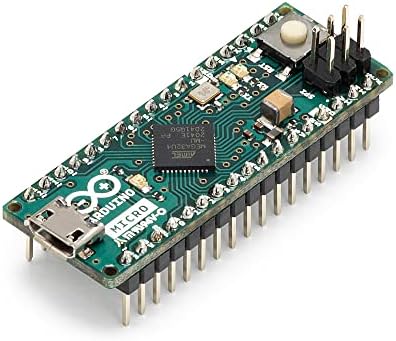



Price: [price_with_discount]
(as of [price_update_date] – Details)
Product Description


ABOUT US
Arduino is the world’s leading open-source hardware and software ecosystem. The Company offers a range of software tools, hardware platforms and documentation enabling almost anybody to be creative with technology.
Originally started as a research project by Massimo Banzi, David Cuartielles, Tom Igoe, Gianluca Martino, and David Mellis at the Interaction Design Institute of Ivrea in the early 2000s, it builds upon the Processing project, a language for learning how to code within the context of the visual arts developed by Casey Reas and Ben Fry as well as a thesis project by Hernando Barragan about the Wiring board.
WHY ARDUINO?








Inexpensive
Arduino boards are relatively inexpensive compared to other microcontroller platforms. The least expensive version of the Arduino module can be assembled by hand, and even the pre-assembled Arduino modules cost not so high.
Simple, clear programming environment
The Arduino Software (IDE) is easy-to-use for beginners, yet flexible enough for advanced users to take advantage of as well. For teachers, it’s conveniently based on the Processing programming environment, so students learning to program in that environment will be familiar with how the Arduino IDE works.
Open source and extensible software
The Arduino software is published as open source tools, available for extension by experienced programmers. The language can be expanded through C++ libraries, and people wanting to understand the technical details can make the leap from Arduino to the AVR C programming language on which it’s based. Similarly, you can add AVR-C code directly into your Arduino programs if you want to.
Open source and extensible hardware
The plans of the Arduino boards are published under a Creative Commons license, so experienced circuit designers can make their own version of the module, extending it and improving it. Even relatively inexperienced users can build the breadboard version of the module in order to understand how it works and save money.
ARDUINO CLASSICS


Message from Massimo Banzi – co-founder
“The Arduino philosophy is based on making designs rather than talking about them. It is a constant search for faster and more powerful ways to build better prototypes. We have explored many prototyping techniques and developed ways of thinking with our hands.”
MOST POPULAR OF CLASSICS








Arduino Uno R3
The ideal board for getting started with electronics, through fun and engaging hands-on projects.
Arduino Due
Perfect for powerful larger scale projects, the Arduino Due is based on a 32-bit ARM core microcontroller.
Arduino Leonardo with Headers
Microcontroller board based on the ATmega32u4 that has built-in USB communication.
Arduino Mega 2560 Rev3
Designed for your most ambitious projects which require additional pins and extra memory. Ideal for devices like 3D printers.
ARDUINO CREATE


Connect, Create, Collaborate
Arduino Create is an integrated online platform that enables Makers and Professional Developers to write code, access content, configure boards, and share projects. Go from an idea to finished IoT project quicker than ever before. With Arduino Create you can use an online IDE, connect multiple devices with the Arduino IoT Cloud, browse a collection of projects on Arduino Project Hub, and connect remotely to your boards with Arduino Device Manager. As well you can share your creations, along with step-by-step guides, schematics, references, and receive feedback from others.
The Micro is a microcontroller board based on the ATmega32U4 (datasheet), developed in conjunction with Adafruit.
It has 20 digital input/output pins (of which 7 can be used as PWM outputs and 12 as analog inputs), a 16 MHz crystal oscillator, a micro USB connection, an ICSP header, and a reset button.
It contains everything needed to support the microcontroller; simply connect it to a computer with a micro USB cable to get started. It has a form factor that enables it to be easily placed on a breadboard.
The Micro board is similar to the Arduino Leonardo in that the ATmega32U4 has built-in USB communication, eliminating the need for a secondary processor.
The Micro can be powered via the micro USB connection or with an external power supply. The power source is selected automatically.
[ad_2]







